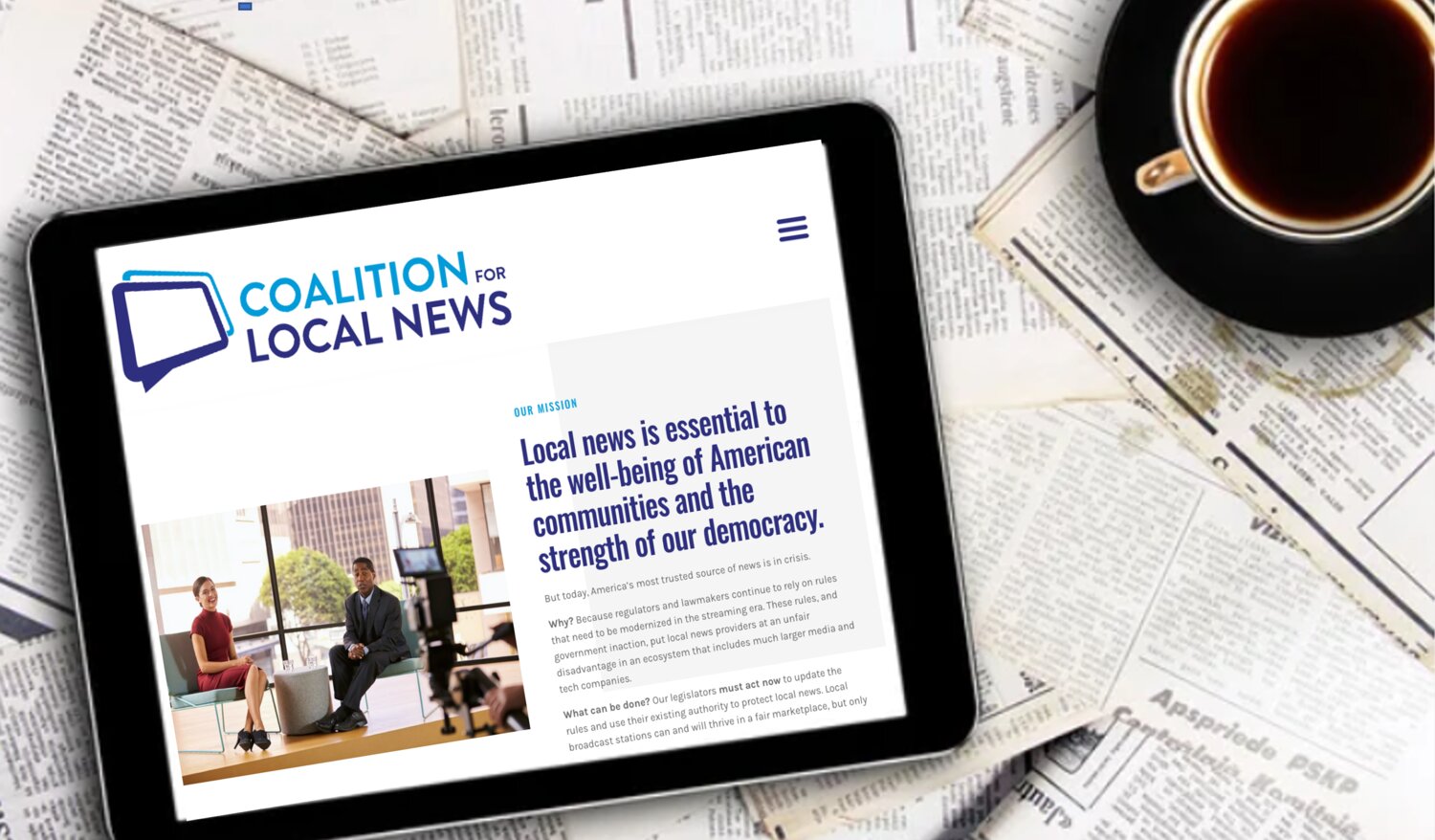
Local broadcasting stations want a seat at the streamers’ negotiating table. So, 600 local news stations have formed a coalition to push the government to give them more bargaining power. Local broadcast station groups formed the Coalition for Local News to protect the future of local television news.
The Coalition is advocating for changes to Federal Communications Commission (FCC) regulations, so virtual multichannel video programming distributors (v-MVPD) will be required to negotiate independently with local news stations. The v-MVPDs include streaming platforms such as YouTube TV, Hulu Live, Fubo and Sling, among others. For nearly a decade, the larger affiliates have negotiated for all the local affiliates, leaving the local groups with take-it-or-leave-it terms.
“What we’re asking is that the streaming services that are bundling, that they’d be regulated in the same way that cable and satellite are, which would allow us to negotiate directly with those providers as stations,” said Mike Meara, past chair of the ABC affiliate board of governors, and a spokesperson representing ABC affiliates. “As more and more viewers shift from cable and satellite to streaming, it creates financial pressure on us in our ability to fund local news.”
The formation of the Coalition comes after several v-MVPDs dropped local station feeds as part of negotiations.
Meara said the Coalition wants the FCC to open public comment to hear why changes are necessary.
The Coalition, and other similarly positioned organizations, have found Congressional voices pushing for public comment.
In a letter to FCC Chair Jessica Rosenworcel, Congresswoman Maria Cantwell (D-Washington), chair of the Senate Commerce, Science and Transportation Committee, wrote that good-faith bargaining is needed so broadcasters are fairly compensated for their content online. “We must ensure that new technological trends do not further endanger our local broadcasters, and so it is critical that the FCC consider whether the current retransmission model is sustainable and continues to benefit our local communities,” the letter stated. The letter said penetration rates for traditional MVPDs, such as cable and satellite companies, have dropped from 88% in 2013 to 52% in 2022. According to the letter, there are nearly 14 million live-streaming subscribers, equal to Charter Communications, the second-largest cable operator in the U.S. The letter further stated that local broadcasters receive 10% to 20% less for their content when live, online streaming services distribute it. Meanwhile, advertising revenue dropped by 40% from 2000 to 2018.
In October, 20 Senators sent a similar letter to the FCC urging the commission to solicit new public comments regarding online streaming regulations, according to a news release issued by the National Association of Broadcasters. Eighteen Democrats and two independents signed the letter. Consumers still watch local news more than national news, according to numbers provided by the Coalition. Sixty-two percent of Americans watch local news on TV, compared to 55% who watch national news programming. Sixty-three percent said they feel local news holds businesses and government accountable.
“Congress and the FCC have always modernized these regulations to reflect the current marketplace so local broadcasters can compete and thrive on a level playing field. This ‘streaming loophole’ takes direct investments away from local broadcasters and allows national media conglomerates to control the right to local broadcasters' signals, ultimately deciding the fate of local news.”
 Bob Miller has spent more than 25 years in local newsrooms, including 12 years as an executive editor with Rust Communications. He also produces an independent true crime investigative podcast called “The Lawless Files.”
Bob Miller has spent more than 25 years in local newsrooms, including 12 years as an executive editor with Rust Communications. He also produces an independent true crime investigative podcast called “The Lawless Files.”
Comments
No comments on this item Please log in to comment by clicking here